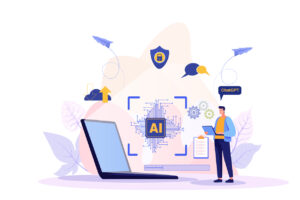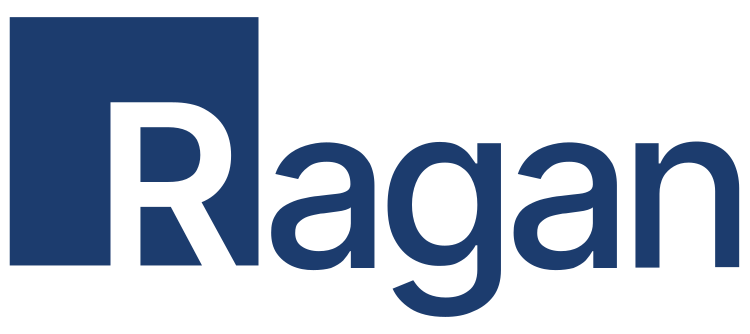How AI helped Nissan expand its content-production abilities
A discussion about immersion, learning and application.

AI’s rise to prominence has left communicators to contend with how it can best help them at work. The best way to accomplish this is first-hand through research and testing.
In our latest edition of Ragan’s “AI Helped Me” series, we spoke with Alejandra Fehrmann, internal communications director, Americas, at Nissan, about her early AI experiences, how she immerses herself in AI learning and how the tech is taking hold at Nissan.
Sean Devlin: Could you tell us a little about how you first started interacting with AI in your role, and how it’s evolved?
Alejandra Fehrmann: I began exploring AI’s full potential in 2015 while working at a consultancy firm. Our team developed digital products that transformed businesses and supported large corporations in their digital journeys. Recognizing the need for agility, we spun off a new company focused on building digital platforms for B2B customers using data and AI.
I immersed myself in AI by working closely with AI product builders like digital twin platforms, chatbots. I also worked through online courses, research papers and hands-on experimentation. This marketing and sales experience enabled me to understand AI’s capabilities deeply and communicate its value effectively to clients. A profound understanding of AI is crucial for achieving business goals, crafting compelling narratives, defining unique selling points and demonstrating real-world benefits.
What’s something about AI that you think communicators need to be talking about but aren’t discussing enough?
AF: Lately, it seems like everyone wants to jump on the AI bandwagon, but very few are enhancing the content it generates. That’s where the real challenge lies. AI is a powerful tool but it’s still just a tool. It’s up to us as communicators to bring context, empathy and strategic thinking to the table. The conversation should focus less on using AI and more on how we can elevate what it produces to truly connect with audiences.
When you first started using AI, how did you educate yourself on how to use it?
AF: I educated myself through self-learning and hands-on experience with engineers, technology entrepreneurs and software developers. I’m naturally curious and consider myself a beta tester for any MVP (Minimum Viable Product). In every job, I volunteered to test new tools and technologies before they were marketed or sold. This helped me understand how they work and their benefits for the business, which is crucial for building strong storytelling around them.
How exactly does AI factor into your role?
AF: AI plays a crucial role in our workflow at Nissan. It’s become an essential part of how we optimize time and streamline tasks across the team.
We use it to accelerate research and ideate on how to automate repetitive steps. It also helps us focus on what truly adds value—strategy, creativity, and human insight. Some of the applications include:
- An AI-Generated Song and Music Video: An AI-generated song and music video about the latest vehicles in our product portfolio were created for the app, adding a unique and entertaining element to the engagement phase of the launch campaign.
- Graphics and Visuals: Tools like Adobe Generative Refill and Firefly were used to enhance and complete visuals, while DALL·E 3 by OpenAI generated creative imagery to support the podcast.
- Original Songs and Lyrics: SUNO and Microsoft Copilot were key in producing original songs and lyrics, adding a distinctive touch to the campaign.
- Video Creation and Editing: LORA models were trained using Weights, and Runway was used to create and edit videos, bringing the content to life in an innovative way.
That said, there’s still so much potential to unlock. To fully embrace AI we need to break away from outdated work models and start integrating this tech as a true complementary partner in the creative process. It’s not about replacing people. It’s about empowering them.
Have you seen any changes to your workflow or customer/stakeholder satisfaction since you’ve begun using AI and automation?
AF: Around 50% of U.S. companies use AI in at least one function, and content creation is a major focus of that usage. We aligned our daily work with this trend, using Copilot as a new corporate tool. We’re able to produce content faster, revise scripts and add new perspectives to our work. In addition, we provide AI-powered translations for different languages, while testing other AI tools to create music, images and videos.
To elevate the launch of the all-new ONE Nissan employee app and its accompanying internal podcast series “The Kakushin Podcast,” we integrated AI-generated content into both campaigns. It was a great opportunity to continue learning and incorporate feedback from our employees’ experiences into new initiatives. A very important part of the entire process is working together with the different departments of the organization that must be involved in each AI project and knowing the company’s AI usage policies to comply.
Do you have a big prediction for AI usage in the next few years?
AF: AI will become increasingly integrated into everyday life. It will transform industries and enhance personal experiences. As AI tools evolve, there will be increasing demand for professionals (AI talents) who know how to use them effectively, creatively and responsibly.
New roles will emerge around prompt design, AI-human collaboration and ethical oversight. Those who master these tools won’t be replaced. Instead, they’ll lead the way. The real shift will be in how we define value and skill in this new landscape.
Sean Devlin is an editor at Ragan Communications. In his spare time he enjoys Philly sports and hosting trivia.







